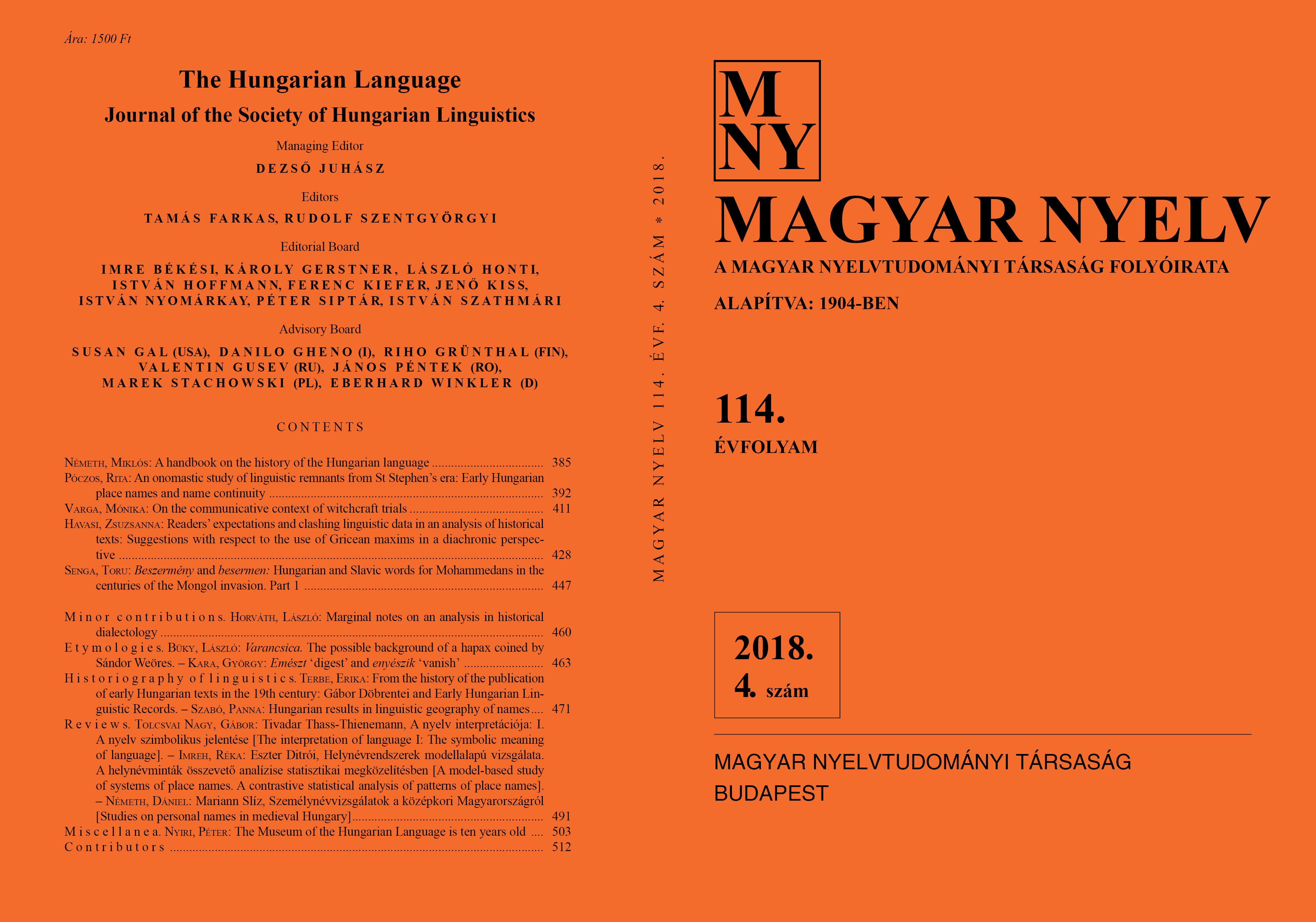Readers’ expectations and clashing linguistic data in an analysis of historical texts
Suggestions with respect to the use of Gricean maxims in a diachronic perspective
DOI:
https://doi.org/10.18349/MagyarNyelv.2018.4.428Keywords:
historical sociopragmatics, historical discourse analysis, Gricean maxims, witchcraft trials, documents in a case, courtroom discourse, language and genderAbstract
This paper provides a historical sociopragmatic analysis of witchcraft trials against married couples with Grice’s maxims and various approaches to them as a point of departure. In analysing documents of trials with special regard to joint handling of the culprits, I arranged the material in terms of what deviations from the maxims can be observed in the documents, especially from the point of view of the present-day reader. Due to peculiarities of the Hungarian material, a method of arrangement similar to that of the Anglo-American material, an analysis in terms of neighbourhoodpairs and dynamic court communication, can be employed to a very limted degree. On the other hand, I have included in the material of investigation parts of the transcripts of the statements from which the present-day reader can suspect the presence of maxim violations or where explicit metalinguistic reflection on such violations occurred. I found it useful to emphasise the communication between the Middle Hungarian actuary and the present-day reader; in this perspective, the whole of the trial document may contradict the Cooperative Priciple, given that the reader expects the document to clearly state whether each culprit is guilty or not guilty. In the analysis I reckoned with the possibility that the content of the maxims may change over time (especially that of the second maxim of quality, and – due to the joint handling of accomplices – of the maxim of relevance); this is emphasised by the approach foregrounding the present-day reader.
Downloads
Published
Issue
Section
License
Copyright (c) 2024 Zsuzsanna Havasi

This work is licensed under a Creative Commons Attribution-NonCommercial-NoDerivatives 4.0 International License.
Magyar Nyelv is a Diamond Open Access periodical. Documents can be freely downloaded and duplicated in an electronic format, and can be used unchanged and with due reference to the original source. Such use must not serve commercial purposes. In the case of any form of dissemination and use, Hungarian Copyright Act LXXVI/1999 and related laws are to be observed. The electronic version of the journal is subject to the regulations of CC BY-NC-ND (Creative Commons – Attribution-NonCommercial-NoDerivatives).
The journal permits its authors, at no cost and without any temporal limitation, to make pre-print copies of their manuscripts publicly available via email or in their own homepage or that of their institution, or in either closed or free-for-all repositories of their institutions/universities, or other non-profit websites, in the form accepted by the journal editor for publication and even containing amendments on the basis of reviewers’ comments. When the authors publicize their papers in this manner, they have to warn their readers that the manuscript at hand is not the final published version of the work. Once the paper has been published in a printed or online form, the authors are allowed (and advised) to use that (post-print) version for the above purposes. In that case, they have to indicate the exact location and other data of the journal publication. The authors retain the copyright of their papers; however, in the case of an occasional secondary publication, the bibliographical data of the first publication have to be included.



